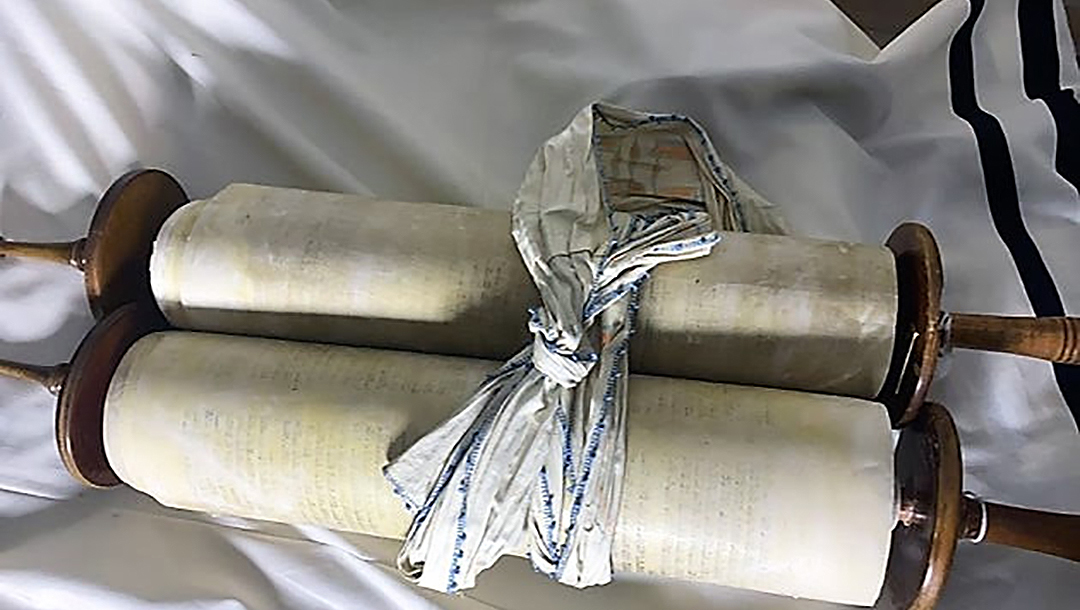
Czech Torah Scroll No. 1052, of the Memorial Scrolls Trust in London, will be on permanent loan to congregation Ec Chajim in Prague, Czech Republic. Photo courtesy Memorial Scrolls Trust
(RNS) — Rabbi David Maxa first read from a Torah scroll eight years ago during a summer he spent at a camp for Reform Jewish leaders.
Maxa, who was visiting the U.S. for the first time, didn’t know it then, but the Torah he read from had originated from his home country — in the Czech city of Brno, about 130 miles from Prague. It had traveled to Kutz Camp in Warwick, New York, 40 years earlier.
On Tuesday, (Sept. 28), that same scroll returned to the Czech Republic, when Maxa and his nascent Prague congregation welcomed it into their ark for use as part of their weekly worship.
The occasion for the scroll’s return is, fittingly, Simchat Torah (or the Rejoicing in the Torah), which begins Tuesday, Sept. 28. The holiday celebrates the completion of a cycle of liturgical readings that concludes with Moses gathering the Israelites for a final speech before ascending Mount Nebo to die in Deuteronomy’s final chapters. Jews then roll the Torah scroll back to its beginning and start a new cycle of readings beginning with Genesis 1.
But the return of the Czech scroll to Prague also marks a return of another kind. In the 75 years following World War II and the near collapse of Jewish life in Europe, many of its treasures, including 1,564 Czech Torah scrolls, made their way to Jewish institutions across the world — the vast majority in the United States and Canada.
Now some of them are returning home. Three years ago, a Torah scroll that had originated in the Czech Republic was returned to a Jewish congregation in Olomouc, a city in the eastern province of Moravia. And on Monday, Maxa’s congregation in Prague, which rents space in a downtown building, was given the 1890 Brno Torah scroll, which had been used most recently at Camp Kutz.
RELATED: An Old World Torah scroll unites a North Carolina synagogue in a time of pandemic
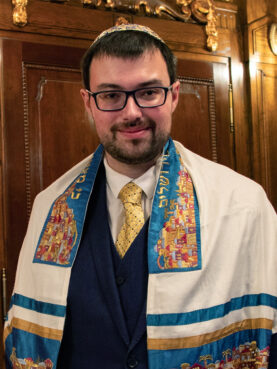
Rabbi David Maxa. Photo courtesy of Sheila Pallay
Torah scrolls, written on parchment, or leather sheets made from the skin of a kosher animal, are Judaism’s holiest physical item. Their presence in a synagogue symbolizes Jewish continuity.
“The Torah is compared to a tree of life,” said Maxa. “This Torah scroll will become the tree of life for us. It’s my hope that my children and others will grow up with this connection.”
Some 117,500 Jews lived in the area of Bohemia and Moravia before the Holocaust. Only about 10,000 survived the war.
Maxa’s father was one of them. He returned to Prague after the war, and late in life, he had a son. But Maxa didn’t grow up practicing Judaism in any meaningful way aside from visits his family made to Jewish cemeteries.
It was only after his father died in 2001 that he ventured into a synagogue and began studying Hebrew and Judaism and moving, he said, beyond the “stigma” of being Jewish to proudly practicing it out in the open.
Jewish life in what is now the Czech Republic was nearly extinguished by the Nazis. Then the Communists, who followed the Nazis, drove all religious life in the region underground.
The Velvet Revolution overthrew the Communist government in Czechoslovakia in 1989, and Jewish congregational life is finally reemerging.
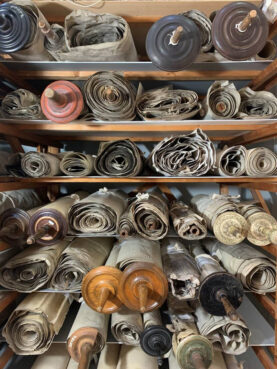
Czech Torah scrolls on display at The Czech Memorial Scrolls Museum in London. Photo courtesy Memorial Scrolls Trust
Thanks to a historical quirk, Czech Jewish liturgical objects, such as Torah scrolls, never disappeared during the Nazi and Communist eras.
That’s because in 1942, the Nazis ordered Jewish communities in Bohemia and Moravia to pack their Torahs, gold and silver filials, books and textiles and ship them to the Jewish Museum in Prague.
The Communists later moved the trove, including some 1,800 Torah scrolls, to a ruined synagogue outside Prague. In 1962, short on cash, the Communists tried to sell them. Israel declined the offer, but a British lawyer and philanthropist, Ralph Yablon, agreed to buy 1,564 scrolls from the Communists, which he turned over in 1964 to the Westminster Synagogue, a Reform congregation in London.
The synagogue then established an independent nonprofit, the Memorial Scrolls Trust, which has since loaned out scrolls to fledgling Jewish congregations that needed them.
About 1,000 scrolls came to North America, said Jeffrey Ohrenstein, chairman of the Memorial Scrolls Trust. Many were in dire need of restoration, but North American congregations, which were growing and thriving, raised money to repair them.
The Kutz Camp, created in 1965, received one of those Czech scrolls in 1974. Hundreds of Jewish teens read from it during summers spent at the camp training for Jewish communal leadership roles in the Reform movement.
In 2019, facing a financial squeeze, the Union for Reform Judaism closed the camp. The question then arose: what to do with its Torah scroll?
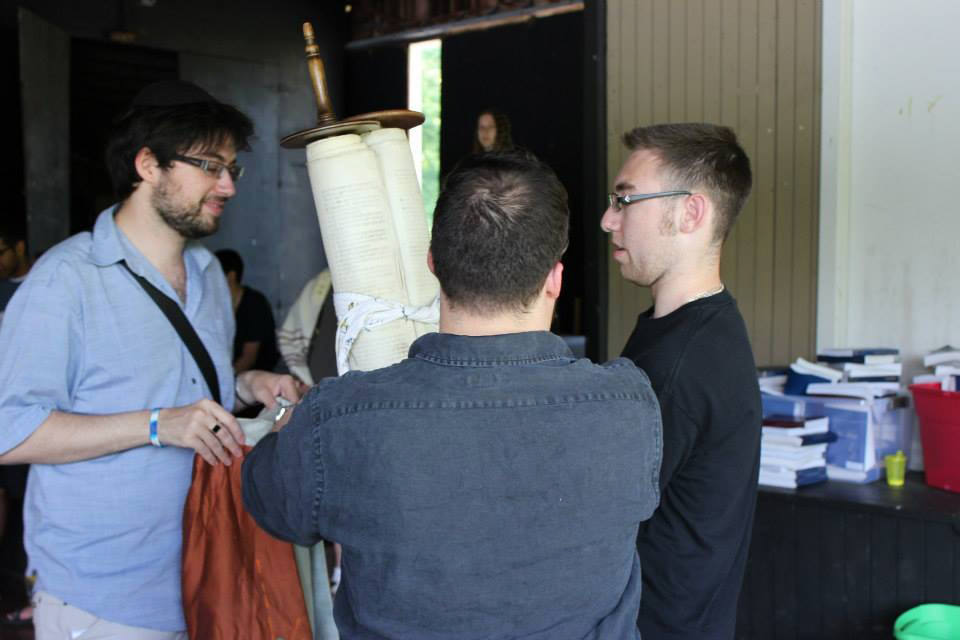
David Maxa, left, with Czech Torah scroll no. 1052 at URJ Kutz Camp in summer 2013. Photo courtesy of Andrew Keene
Andrew Keene, who served as vice chair of the camp council, remembered that Maxa had come to the camp in 2013 and 2014 and had since been ordained in Potsdam, Germany, through the Abraham Geiger College, a rabbinical seminary affiliated with the Reform movement.
Keene called Maxa and asked if his new congregation needed a Torah scroll.
It did.
Maxa’s congregation, which is called “Ec Chajim” or “Tree of Life,” was started by a group of young Jewish couples. At first the group hosted Shabbat dinners in each other’s homes. Then, they held services in hotels and on boats. Last year, the congregation finally rented a space but was unable to meet because of the coronavirus pandemic.
There are an estimated 3,000 Jews affiliated with Jewish institutions in the Czech Republic these days but as many as 20,000 others who may no longer have any connection to their Jewish roots.
In addition to his work with the Prague synagogue, Maxa is working with Jews living outside of Prague to found two more congregations.
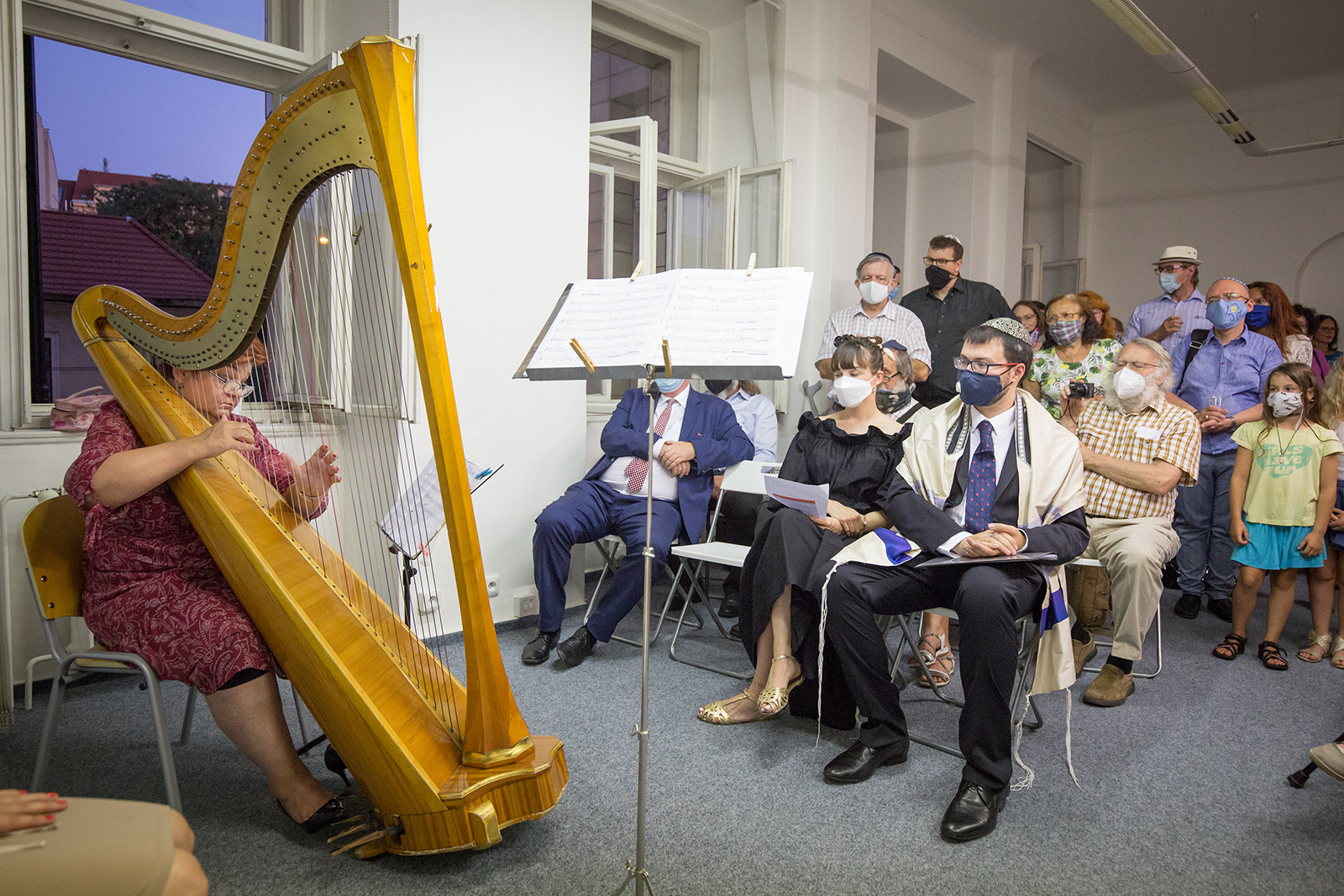
A harpist plays during the opening of the “Ec Chajim” synagogue in Prague, Czech Republic. Photo courtesy of Leona Kalvodová
“I have two communities in the countryside,” Maxa said. “People come with similar questions: How can I find my way back to my Jewish roots, my tradition?”
On Monday, Ohrenstein, of the Memorial Scrolls Trust, and Keene formally turned over the Torah to the Prague congregation at Charles University. From there, it was walked to its new home.
In keeping with tradition, members of the new congregation took turns holding the Torah and circling it around the building.
The scroll remains the property of the Memorial Scrolls Trust in London, but it will be on permanent loan to the congregation for as long as it needs it.
“Normally you think of a memorial as being in one place,” said Ohrenstein. “But the scrolls that came to London helped to create 1,400 memorials around the world.”
This Saturday, alongside Jews across the world, the Czech scroll will serve as more than a memorial. It will be part of a new cycle of liturgical readings — beginning with Genesis 1, verse 1.




